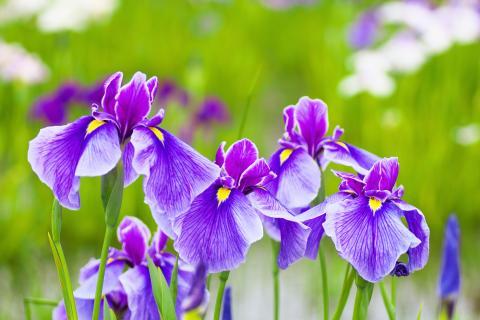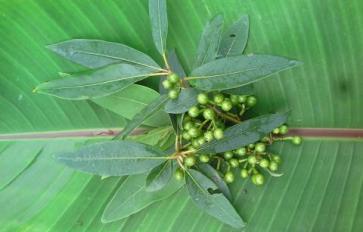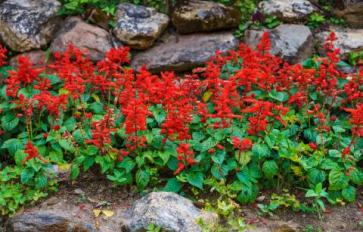
The iris is a member of the family Iridaceae or Iris family of the genus Iris L. or iris P and contains fifty-two species. The plant originated from the eastern Mediterranean basin eastward to India. It was named after the Greek mythological entity Iris who is said to travel on a rainbow and had golden wings—this is appropriate as there are believed to be more than 200 varieties of the plant. The ancient Egyptians and Indians used the plant and its byproducts for medicinal purposes. In Florence, Italy in the 19th century the rhizomes were dried and used as an ingredient in the production of perfume which evolved into a major industry. By 1876 approximately 10,000 tons of dried iris rhizomes were distributed to countries around the world. One of the byproducts of the iris is orris root and was used in Germany to keep the beer fresh; in France it was used to enhance the bouquet of the wine; and in England it was an ingredient in artificial brandies as a flavor enhancer.
The iris can be a tall plant maturing to a height of a minimum of twenty-four inches. The blooms are made up of three large outer petals known as “falls” and three inner petals that grow upright and are known as “standards.” The falls produce beards or crests; in some species the bearded varieties grow soft hair-like strands originating along the center of the fall. Those species that produce crests have a comb or ridge emanating from the fall.
Most species of irises bloom in early summer and the bearded varieties are considered remontant, blooming again in the late summer. There are three main categories of the plant: the tall bearded variety as previously described; the Dutch varieties that will mature to a height from one-and-a half to two feet and spread to a width from six to twelve inches; and the dwarf varieties that grow symmetrically six to twelve inches both in height and in width.
How To Grow & Maintain Irises
Irises should be planted in late summer to give them enough time to develop before the winter season. They need full sunlight in order to bloom and should be planted in fertile soil that has a neutral to slightly acidic pH. Before planting, loosen the soil to a depth of twelve to fifteen inches and mix two to four inches of compost.
Plant the rhizomes either individually or in threes in a hole four inches deep and ten inches in diameter with the leaves facing outward. Form a ridge down the center and place the rhizomes on the ridge, spreading the roots on either side, and fill in the hole with the rhizome leaves and cover the rhizomes with a light layer of soil. Thoroughly water the plants and apply a low nitrogen fertilizer; repeat the application in the spring about six to eight weeks before blooms are scheduled to develop.
After the flowers cease to be produced, let the leaves continue to grow as they nourish the plant for the winter months. When the irises begin to crowd they can be divided from the main plant and replanted. It is advised to discard the main plant as it will no longer bloom.
Healing Properties Of Irises
Irises have been used for medicinal purposes for many centuries. The main healing properties are found in the rhizomes which are cultivated as orris root. The juiced orris has been used to treat dropsy and topically to remove freckles. In its dry form it was used to treat pulmonary disorders and chewed to dissipate bad breath. The fresh root was known to have cathartic, emetic, and diuretic healing benefits. Other medicinal uses for the plant were in the treatment of diarrhea and bronchitis. Today the plant is not primarily used as a medicinal herb.
Facts & Tips About Irises
Irises have been used as an ingredient in snuff and today the dried root is a flavoring for toothpowders and dentifrices and as an ingredient in perfumes and sachet powders. In Russia it was used to flavor a honey and ginger drink that was sold by street vendors. The larger and finer roots were used in the making of cloth and the smaller roots were given to teething infants.








